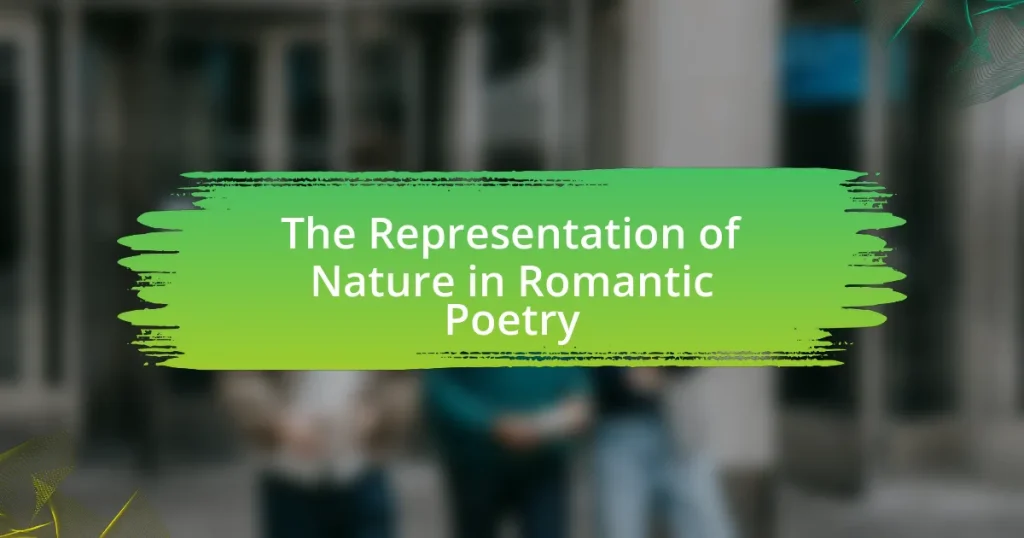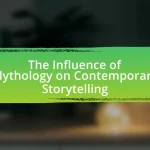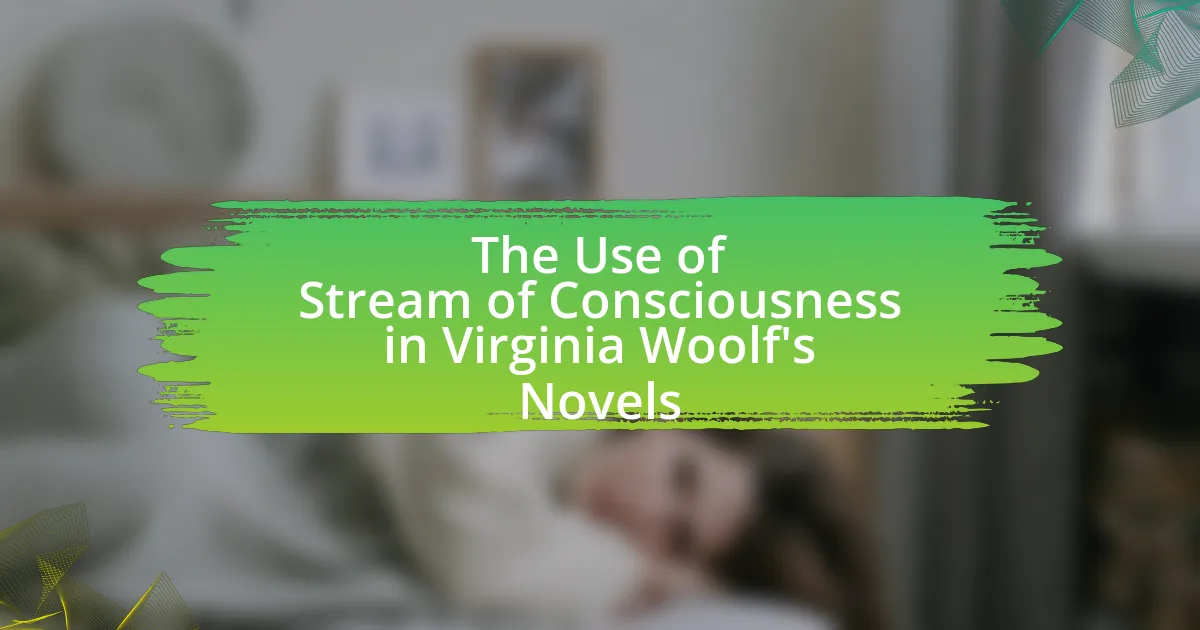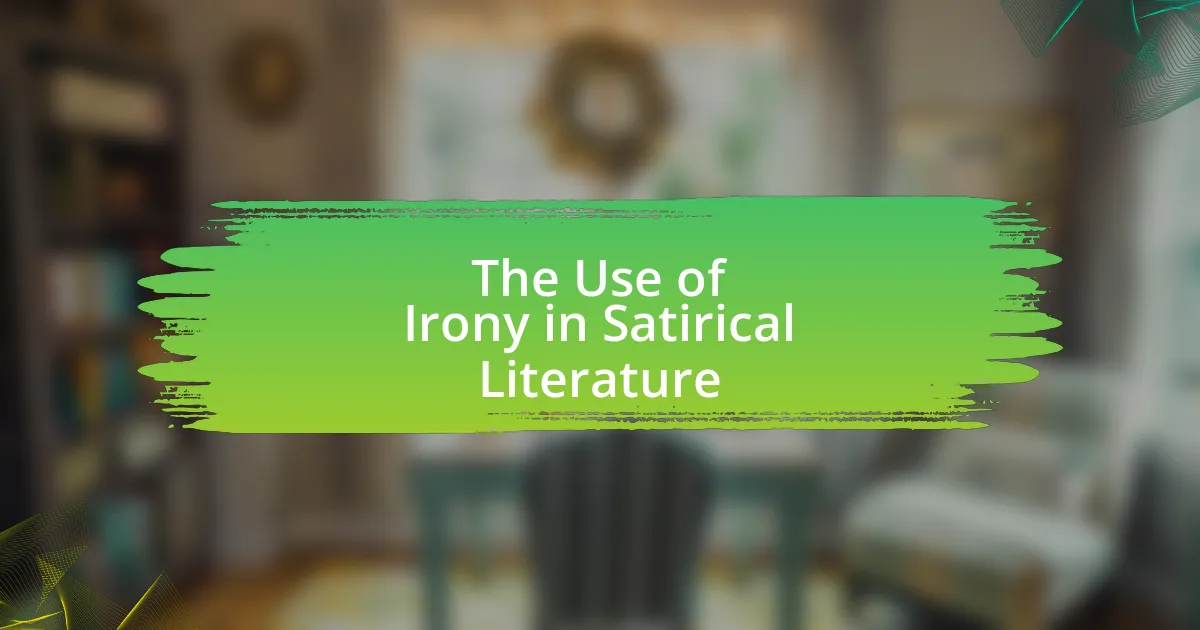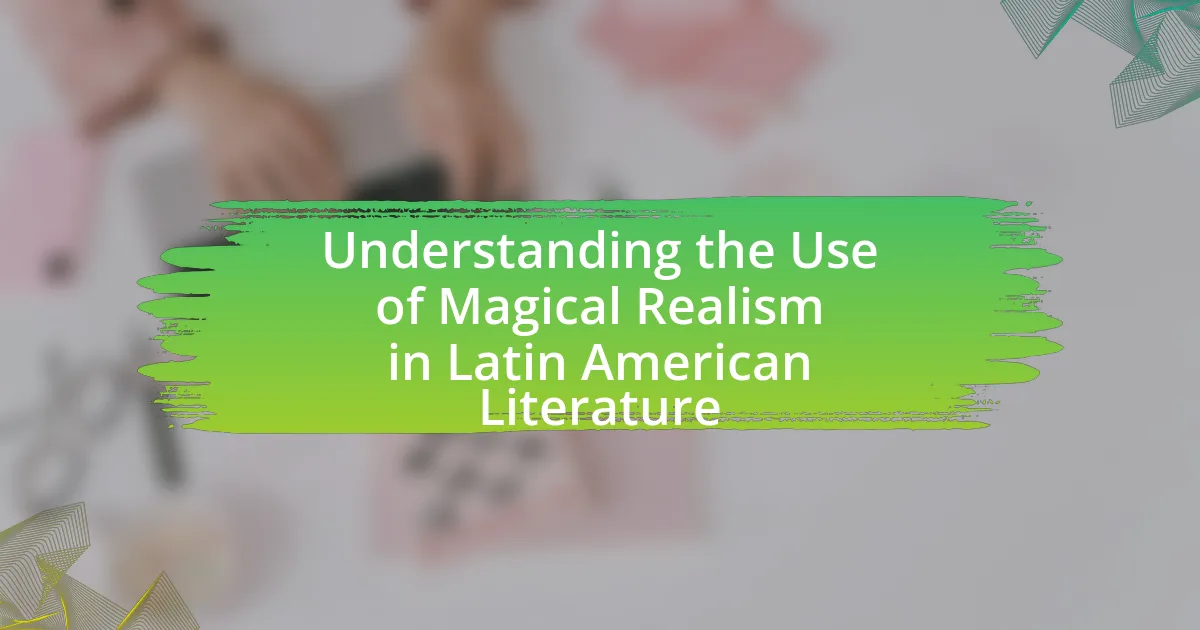The article examines the representation of nature in Romantic poetry, highlighting its beauty, emotional power, and spiritual significance as depicted by poets such as William Wordsworth and Samuel Taylor Coleridge. It explores how Romantic poets viewed nature as a source of inspiration and a reflection of human emotions, emphasizing themes like the sublime, the interconnectedness of humanity and nature, and the critique of industrialization. The article also discusses the varying portrayals of nature among different poets, the role of imagery and symbolism, and the lasting impacts of Romantic nature representation on modern poetry and environmental discourse.
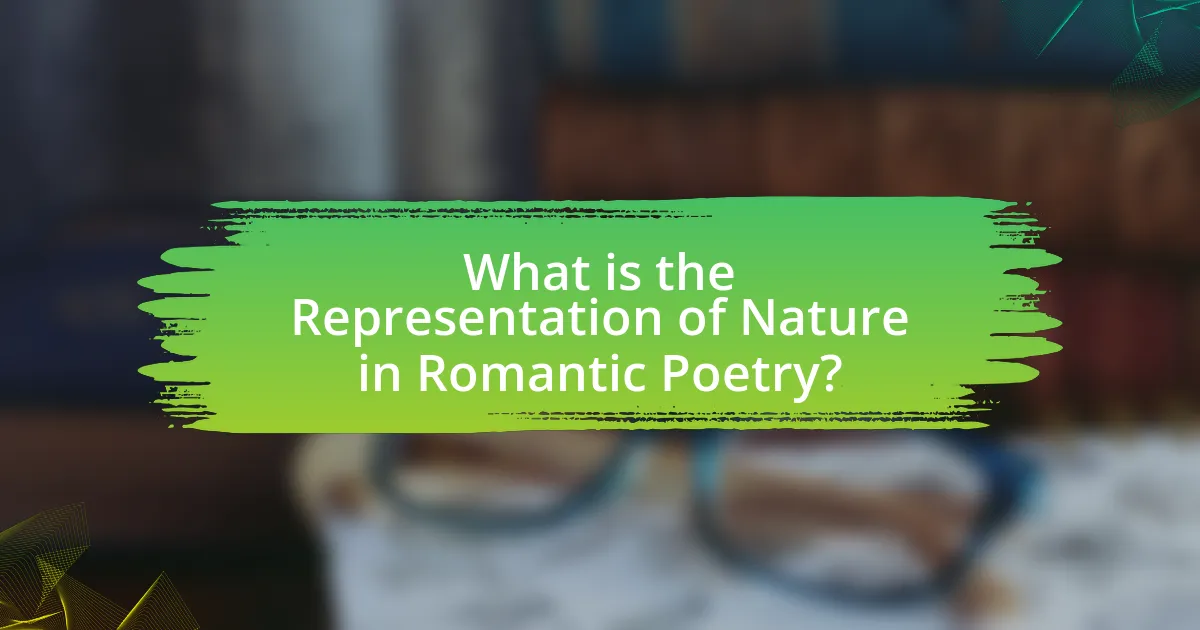
What is the Representation of Nature in Romantic Poetry?
The representation of nature in Romantic poetry is characterized by an emphasis on its beauty, emotional power, and spiritual significance. Romantic poets, such as William Wordsworth and Samuel Taylor Coleridge, often depicted nature as a source of inspiration and a reflection of human emotions. For instance, Wordsworth’s “Lines Composed a Few Miles Above Tintern Abbey” illustrates how nature serves as a restorative force, providing solace and a deeper understanding of the self. This portrayal aligns with the Romantic ideal that nature is not merely a backdrop but an active participant in the human experience, embodying themes of transcendence and the sublime.
How did Romantic poets perceive nature?
Romantic poets perceived nature as a profound source of inspiration and a reflection of human emotion. They viewed the natural world as a living entity that could evoke deep feelings and serve as a backdrop for personal and spiritual exploration. For instance, William Wordsworth emphasized the beauty and spiritual significance of nature in his works, suggesting that it could lead to moral and emotional enlightenment. Similarly, John Keats celebrated the sensory experiences of nature, portraying it as a source of beauty and truth. This perception is validated by the poets’ frequent use of nature imagery to express complex human emotions, illustrating their belief in the interconnectedness of humanity and the natural world.
What themes related to nature are prevalent in Romantic poetry?
Themes related to nature prevalent in Romantic poetry include the glorification of the natural world, the exploration of the sublime, and the connection between nature and human emotion. Romantic poets often depicted nature as a source of inspiration and spiritual renewal, emphasizing its beauty and power. For instance, William Wordsworth celebrated the tranquility and restorative qualities of nature in works like “Lines Composed a Few Miles Above Tintern Abbey.” Additionally, the concept of the sublime, as articulated by Edmund Burke, highlights the awe and terror found in nature’s grandeur, which is evident in poems by Samuel Taylor Coleridge. These themes reflect the Romantic ideal of nature as a living entity that influences human experience and creativity.
How does the portrayal of nature differ among various Romantic poets?
The portrayal of nature among various Romantic poets differs significantly in terms of emotional depth, perspective, and thematic focus. For instance, William Wordsworth emphasizes nature as a source of spiritual renewal and moral guidance, often depicting it as a nurturing force that fosters human connection and introspection, as seen in his poem “Lines Composed a Few Miles Above Tintern Abbey.” In contrast, Samuel Taylor Coleridge presents nature as a complex and sometimes supernatural entity, reflecting both beauty and terror, particularly in works like “The Rime of the Ancient Mariner,” where nature embodies the sublime and the mysterious. Meanwhile, John Keats focuses on the sensual and aesthetic qualities of nature, celebrating its beauty and transience in poems such as “Ode to a Nightingale.” These differing portrayals highlight the diverse ways Romantic poets engage with nature, shaping their individual philosophies and artistic expressions.
Why is nature significant in Romantic poetry?
Nature is significant in Romantic poetry because it serves as a central theme that reflects the emotional depth and philosophical ideals of the Romantic movement. Romantic poets, such as William Wordsworth and Samuel Taylor Coleridge, often depicted nature as a source of inspiration, beauty, and spiritual connection, emphasizing its role in human experience and emotion. For instance, Wordsworth’s “Lines Composed a Few Miles Above Tintern Abbey” illustrates how nature can evoke profound feelings and memories, highlighting the intimate relationship between the individual and the natural world. This focus on nature not only underscores the poets’ reverence for the environment but also critiques industrialization and urbanization, which they viewed as detrimental to the human spirit.
What role does nature play in expressing human emotions?
Nature serves as a profound medium for expressing human emotions, often reflecting the inner states of individuals. In Romantic poetry, nature is frequently personified and imbued with emotional significance, allowing poets to convey feelings such as joy, sorrow, and longing through natural imagery. For instance, William Wordsworth’s use of daffodils in “I Wandered Lonely as a Cloud” symbolizes beauty and elation, illustrating how natural elements can evoke deep emotional responses. This connection between nature and emotion is supported by psychological studies indicating that exposure to natural environments can enhance mood and reduce stress, reinforcing the idea that nature plays a crucial role in the emotional landscape of human experience.
How does nature serve as a backdrop for philosophical exploration in Romantic works?
Nature serves as a backdrop for philosophical exploration in Romantic works by embodying the ideals of emotion, individualism, and the sublime. Romantic poets, such as William Wordsworth and Samuel Taylor Coleridge, utilized natural landscapes to reflect inner thoughts and emotions, illustrating the connection between humanity and the natural world. For instance, Wordsworth’s “Lines Composed a Few Miles Above Tintern Abbey” emphasizes how nature inspires profound contemplation and personal growth, showcasing the belief that nature is a source of spiritual and philosophical insight. This connection is further supported by the Romantic notion that nature is a living entity, capable of evoking deep emotional responses and facilitating self-discovery, as seen in Coleridge’s “The Rime of the Ancient Mariner,” where nature’s power and mystery provoke existential questions. Thus, nature in Romantic literature serves not only as a setting but also as a catalyst for exploring complex philosophical themes.
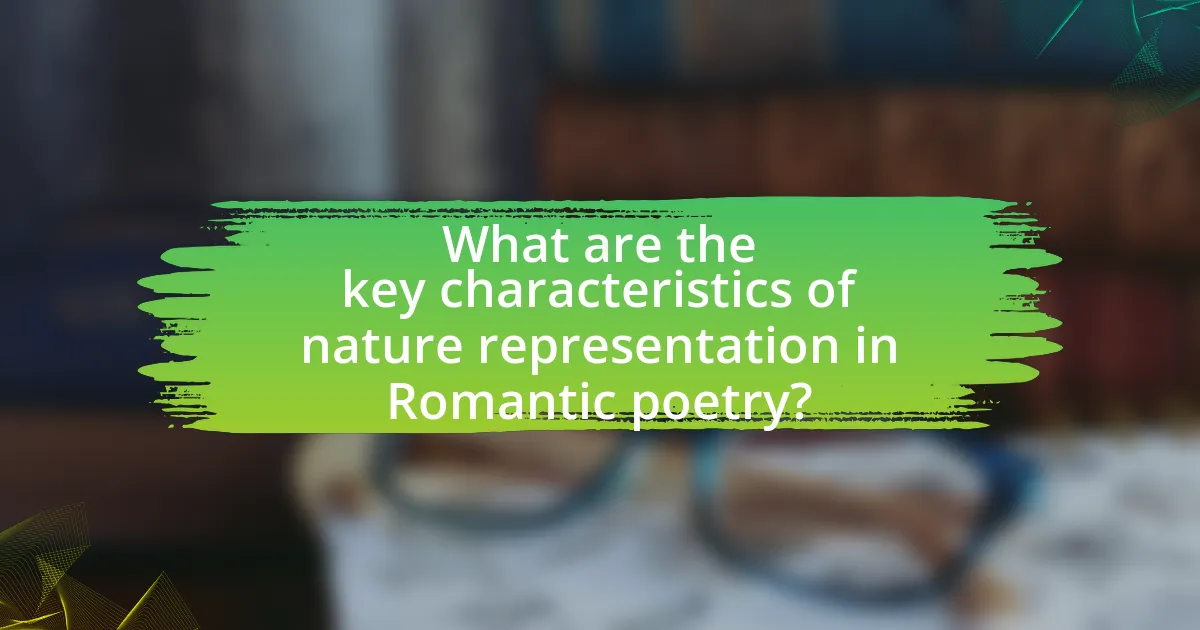
What are the key characteristics of nature representation in Romantic poetry?
The key characteristics of nature representation in Romantic poetry include an emphasis on emotional connection, idealization of the natural world, and the exploration of nature as a source of inspiration and spiritual insight. Romantic poets often depicted nature as a living entity, reflecting human emotions and experiences, which is evident in works by poets like William Wordsworth and Samuel Taylor Coleridge. For instance, Wordsworth’s “Lines Composed a Few Miles Above Tintern Abbey” illustrates how nature evokes deep feelings and memories, showcasing the intimate bond between the individual and the natural landscape. Additionally, Romantic poetry frequently idealizes nature, portraying it as pure, untainted by industrialization, which can be seen in Coleridge’s “The Rime of the Ancient Mariner,” where the beauty of the natural world contrasts with human transgressions. This representation underscores the belief that nature holds profound truths and wisdom, serving as a catalyst for personal and artistic growth.
How do imagery and symbolism enhance the depiction of nature?
Imagery and symbolism enhance the depiction of nature by creating vivid mental pictures and conveying deeper meanings that resonate emotionally with the audience. In Romantic poetry, poets like William Wordsworth and Samuel Taylor Coleridge utilize imagery to evoke sensory experiences, allowing readers to visualize landscapes and feel the atmosphere of nature. For instance, Wordsworth’s use of descriptive language in “I Wandered Lonely as a Cloud” paints a clear image of daffodils, which not only illustrates the beauty of the scene but also symbolizes the joy and inspiration that nature can provide. Additionally, symbolism in Romantic poetry often represents broader themes, such as the connection between humanity and the natural world, as seen in Coleridge’s “The Rime of the Ancient Mariner,” where the albatross symbolizes the sanctity of all living things. This combination of imagery and symbolism deepens the reader’s understanding and appreciation of nature’s complexities and emotional significance.
What specific images are commonly used to represent nature in this genre?
Common images used to represent nature in Romantic poetry include lush landscapes, serene lakes, majestic mountains, blooming flowers, and vibrant forests. These images evoke emotional responses and reflect the poets’ deep appreciation for the beauty and power of the natural world. For instance, William Wordsworth often depicted the tranquility of rural scenes and the sublime aspects of nature, emphasizing the connection between humanity and the environment. This focus on nature serves to illustrate the Romantic ideal of finding inspiration and solace in the natural world, as seen in works like “I Wandered Lonely as a Cloud,” where daffodils symbolize joy and beauty.
How does symbolism in nature reflect the poets’ inner feelings?
Symbolism in nature serves as a mirror for poets’ inner feelings by using natural elements to convey emotions and states of mind. For instance, a storm may symbolize turmoil or conflict within the poet, while a serene landscape can reflect peace and contentment. This connection is evident in the works of Romantic poets like William Wordsworth, who often used imagery of nature to express personal emotions, such as in “I Wandered Lonely as a Cloud,” where daffodils symbolize joy and inspiration. The use of nature as a symbol allows poets to externalize their internal experiences, making their feelings more relatable and vivid to readers.
What contrasts exist between nature and industrialization in Romantic poetry?
Romantic poetry often contrasts the beauty and purity of nature with the harshness and degradation brought by industrialization. Poets like William Wordsworth and Samuel Taylor Coleridge celebrate the sublime aspects of nature, emphasizing its restorative and spiritual qualities, while simultaneously critiquing the negative impacts of industrial progress, such as pollution and the loss of rural landscapes. For instance, Wordsworth’s “Lines Composed a Few Miles Above Tintern Abbey” reflects on the tranquility of nature, contrasting it with the encroaching industrial world, which he views as detrimental to human connection and well-being. This juxtaposition highlights the Romantic idealization of nature as a source of inspiration and moral clarity, in stark opposition to the mechanization and alienation associated with industrial society.
How do Romantic poets critique industrialization through their depiction of nature?
Romantic poets critique industrialization by contrasting the beauty and purity of nature with the destructive impact of industrial progress. For instance, William Wordsworth often emphasizes the tranquility and spiritual connection found in natural landscapes, portraying industrialization as a force that disrupts this harmony. In his poem “Lines Written a Few Miles Above Tintern Abbey,” Wordsworth reflects on the restorative power of nature, suggesting that industrialization alienates humanity from its essential self. Similarly, John Keats uses vivid imagery of nature to highlight its richness and vitality, implicitly criticizing the mechanization and pollution brought about by industrial growth. This critique is evident in Keats’ “Ode to a Nightingale,” where the nightingale symbolizes an untainted natural world, contrasting sharply with the harsh realities of industrial life. Through these depictions, Romantic poets advocate for a return to nature as a source of inspiration and moral clarity, underscoring the detrimental effects of industrialization on both the environment and the human spirit.
What examples illustrate the tension between nature and urban life in Romantic works?
Romantic works often illustrate the tension between nature and urban life through examples such as William Wordsworth’s “London, 1802” and William Blake’s “London.” In “London, 1802,” Wordsworth laments the loss of natural virtue in the face of industrialization, calling for the return of a great poet to inspire moral regeneration. Blake’s “London” depicts the oppressive nature of urban life, highlighting the contrast between the natural world and the grim realities of city existence, where the cries of the innocent are stifled by the structures of society. These works exemplify the Romantic ideal of nature as a source of inspiration and moral clarity, juxtaposed against the dehumanizing effects of urbanization.

How does the representation of nature evolve within the Romantic period?
The representation of nature within the Romantic period evolves from a mere backdrop to human emotion to a central character that embodies the sublime and the spiritual. Early Romantic poets, such as William Wordsworth, emphasize nature as a source of inspiration and moral guidance, reflecting a deep connection between the human spirit and the natural world. As the period progresses, poets like John Keats and Percy Bysshe Shelley depict nature as a dynamic force, illustrating its beauty and terror, which evokes profound emotional responses. This evolution is marked by a shift from viewing nature as a pastoral ideal to recognizing its complexity and power, ultimately portraying it as a reflection of human experience and emotion.
What influences shaped the changing views of nature among Romantic poets?
The changing views of nature among Romantic poets were primarily shaped by the Industrial Revolution, the Enlightenment, and a reaction against rationalism. The Industrial Revolution led to urbanization and environmental degradation, prompting poets like William Wordsworth to emphasize the beauty and spiritual significance of nature as a refuge from industrial society. The Enlightenment’s focus on reason and science contrasted with Romanticism’s embrace of emotion and the sublime, influencing poets such as Samuel Taylor Coleridge to explore the mystical and emotional aspects of nature. This shift is evident in works like Wordsworth’s “Lines Composed a Few Miles Above Tintern Abbey,” where he reflects on nature’s restorative power, illustrating the poets’ evolving relationship with the natural world.
How did historical events impact the portrayal of nature in Romantic poetry?
Historical events significantly influenced the portrayal of nature in Romantic poetry by reflecting the emotional and philosophical responses to industrialization, revolution, and societal change. The Industrial Revolution, for instance, prompted poets like William Wordsworth and Samuel Taylor Coleridge to emphasize the beauty and spirituality of nature as a counterpoint to urbanization and mechanization, which they viewed as destructive forces. This is evident in Wordsworth’s “Lines Composed a Few Miles Above Tintern Abbey,” where he celebrates the restorative power of nature amidst the encroaching industrial landscape. Additionally, the political upheaval of the French Revolution inspired poets to explore themes of freedom and the sublime in nature, as seen in the works of Percy Bysshe Shelley, who linked natural beauty with revolutionary ideals. Thus, the historical context of Romantic poetry reveals a deep connection between the poets’ responses to their changing world and their depictions of nature.
What literary movements preceded or followed Romanticism that affected its view of nature?
The literary movements that preceded Romanticism and affected its view of nature include Neoclassicism and the Enlightenment. Neoclassicism emphasized reason, order, and adherence to classical ideals, often portraying nature as a backdrop for human action rather than a subject of emotional engagement. The Enlightenment further promoted rational thought and scientific inquiry, leading to a more utilitarian view of nature. Following Romanticism, the Transcendentalist movement embraced a more spiritual and individualistic connection to nature, emphasizing its inherent beauty and moral significance. This shift reflected a reaction against industrialization and urbanization, which Romanticism had already begun to critique.
What are the lasting impacts of Romantic nature representation on modern poetry?
The lasting impacts of Romantic nature representation on modern poetry include a heightened emphasis on emotional connection to the natural world and the exploration of individual experience within nature. Modern poets often draw inspiration from the Romantic ideal of nature as a source of beauty, solace, and spiritual insight, reflecting the belief that nature can evoke profound emotional responses. For instance, poets like Mary Oliver and Robert Frost incorporate vivid imagery and personal reflection in their works, echoing the Romantic tradition of using nature as a backdrop for exploring human emotions and existential themes. This continuity demonstrates how Romanticism has shaped contemporary poetic forms and themes, reinforcing the idea that nature remains a vital element in understanding human experience.
How do contemporary poets draw inspiration from Romantic depictions of nature?
Contemporary poets draw inspiration from Romantic depictions of nature by emphasizing emotional connections and personal experiences with the natural world. They often reflect the Romantic ideal of nature as a source of beauty, solace, and spiritual insight, mirroring the works of poets like Wordsworth and Coleridge, who celebrated nature’s transformative power. For instance, contemporary poets frequently utilize vivid imagery and sensory details to evoke feelings similar to those found in Romantic poetry, thereby creating a bridge between past and present perspectives on nature. This approach is evident in the works of poets such as Mary Oliver and Gary Snyder, who explore themes of interconnectedness and the human experience within natural settings, reinforcing the enduring influence of Romanticism on modern poetic expression.
What themes from Romantic poetry continue to resonate in today’s environmental discourse?
Themes from Romantic poetry that resonate in today’s environmental discourse include the celebration of nature, the critique of industrialization, and the emphasis on emotional connections to the natural world. Romantic poets like William Wordsworth and John Keats highlighted the beauty and sanctity of nature, advocating for its preservation. This perspective aligns with contemporary environmental movements that stress the importance of protecting natural ecosystems. Additionally, the Romantic critique of industrialization, as seen in the works of poets like Percy Bysshe Shelley, reflects current concerns about the environmental degradation caused by industrial practices. The emotional and spiritual connections to nature emphasized by Romantic poets continue to inspire modern environmentalists to foster a deeper appreciation for the natural world, reinforcing the idea that human well-being is intrinsically linked to the health of the environment.
What practical insights can be gained from studying the representation of nature in Romantic poetry?
Studying the representation of nature in Romantic poetry reveals insights into the emotional and philosophical connections humans have with the natural world. Romantic poets, such as William Wordsworth and Samuel Taylor Coleridge, emphasized nature as a source of inspiration, solace, and moral guidance, illustrating how nature can reflect human emotions and experiences. For example, Wordsworth’s “Lines Composed a Few Miles Above Tintern Abbey” showcases nature as a restorative force, suggesting that engagement with the natural environment can lead to personal growth and emotional healing. This connection underscores the importance of preserving natural spaces for mental well-being and highlights the role of nature in shaping cultural and individual identities.
How can understanding Romantic nature themes enhance our appreciation of literature?
Understanding Romantic nature themes enhances our appreciation of literature by revealing the deep emotional and philosophical connections between humans and the natural world. Romantic poets, such as William Wordsworth and Samuel Taylor Coleridge, emphasized nature as a source of inspiration, solace, and moral guidance, which invites readers to reflect on their own relationships with the environment. For instance, Wordsworth’s “Lines Composed a Few Miles Above Tintern Abbey” illustrates how nature can evoke profound feelings and memories, demonstrating the transformative power of the natural landscape. This focus on nature encourages readers to explore themes of beauty, spirituality, and the sublime, enriching their literary experience and fostering a greater understanding of the human condition in relation to the world around them.
What lessons about nature and humanity can be applied to modern environmental issues?
The lessons about nature and humanity that can be applied to modern environmental issues emphasize the interconnectedness of all living beings and the importance of respecting natural ecosystems. Romantic poetry often illustrates the profound relationship between humans and nature, highlighting how human actions can disrupt this balance. For instance, William Wordsworth’s reflections on nature reveal the necessity of preserving the environment for future generations, as seen in his poem “Lines Composed a Few Miles Above Tintern Abbey,” where he advocates for a harmonious coexistence with nature. This perspective is supported by contemporary environmental science, which shows that biodiversity loss and climate change are direct results of human neglect and exploitation of natural resources. Therefore, the Romantic emphasis on reverence for nature serves as a crucial reminder that sustainable practices are essential for the health of both the planet and humanity.
